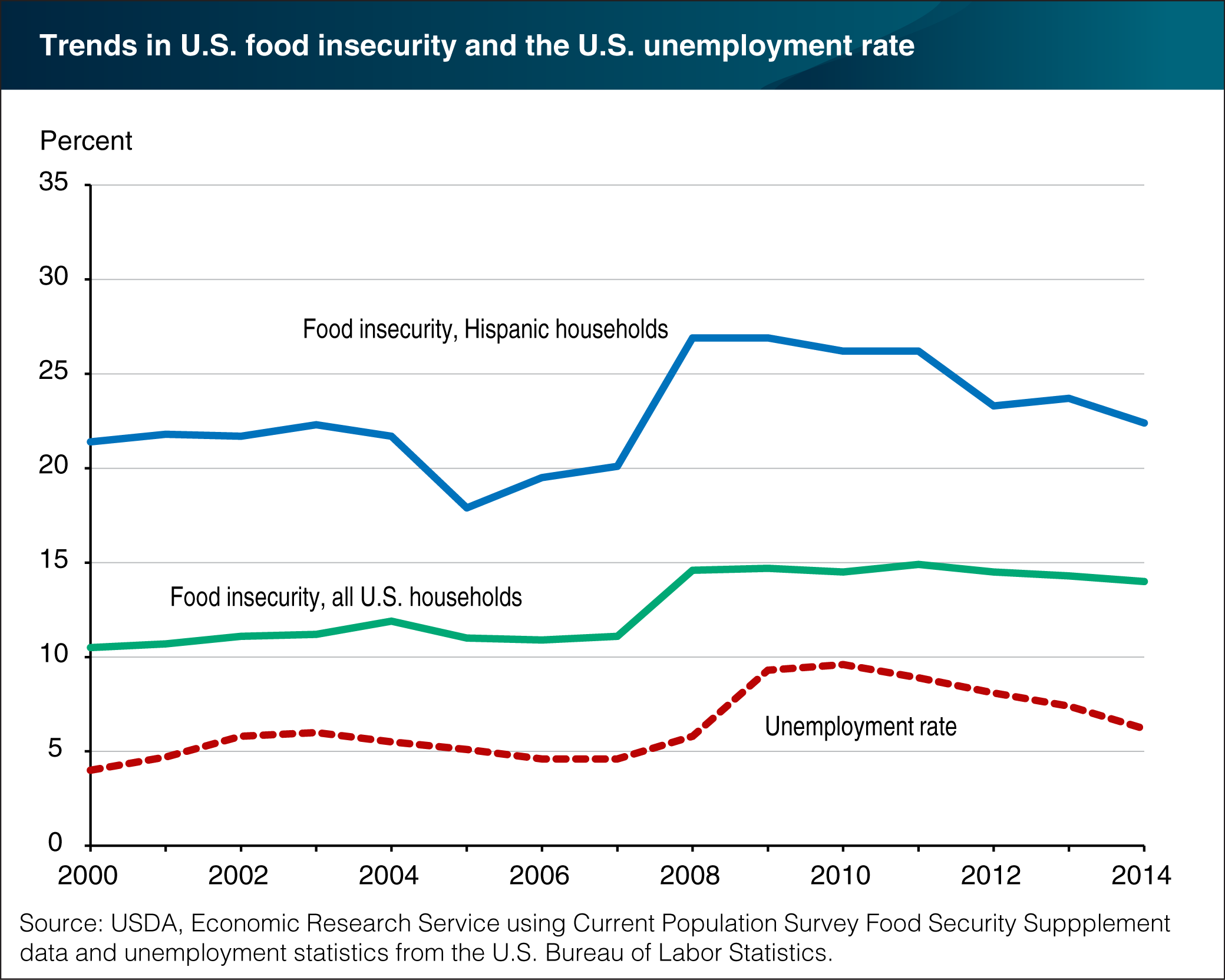Food insecurity in U.S. Hispanic households tracks closely with the U.S. unemployment rate
- by Michael D. Smith
- 7/13/2016

Between 2000 and 2014, food insecurity for U.S. Hispanic households followed U.S. labor market conditions—as measured by the unemployment rate—and was more responsive to employment changes than the Nation as a whole. Food-insecure households have difficulty consistently obtaining adequate food for all household members because of limited economic resources for food. The prevalence of food insecurity among U.S. Hispanic households dropped more sharply than the national prevalence rate in 2005, when unemployment declined after the 2001 recession, and increased more sharply than the national prevalence rate with the onset of the 2007-09 recession. In 2008, food insecurity rose from 20.1 percent to 26.9 percent for Hispanic households and from 11.1 to 14.6 percent for all U.S. households. Similarly, as the economy improved, food insecurity in Hispanic households dropped more quickly than in all U.S. households. Food insecurity declined among all U.S. households from 14.9 percent in 2011 to 14.0 percent in 2014, but Hispanic households had a larger decline—from 26.2 percent to 22.4 percent over the three years. This chart appears in “Food Insecurity and Hispanic Diversity” in the July 2016 issue of ERS’s Amber Waves magazine.

